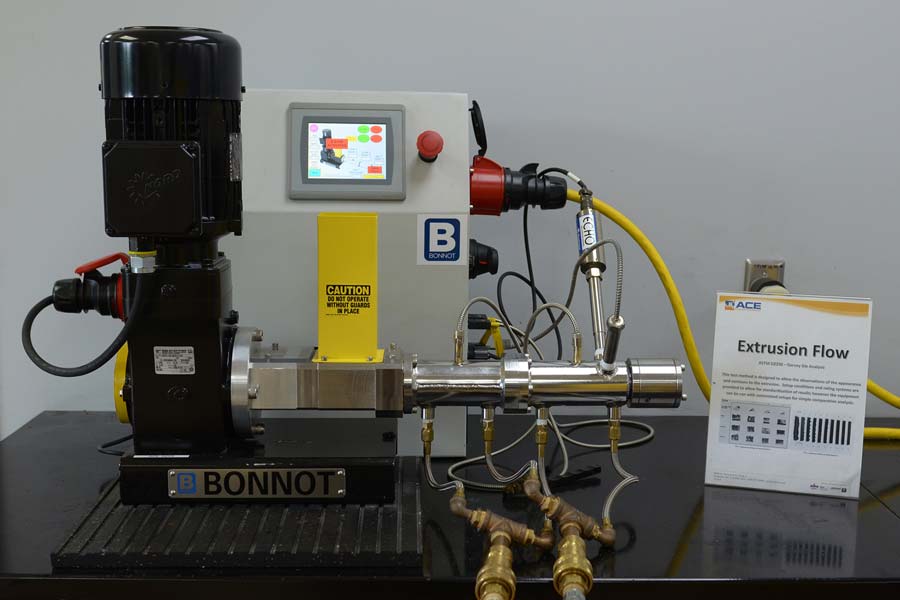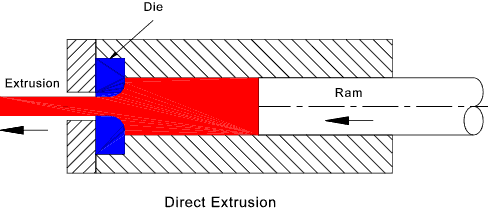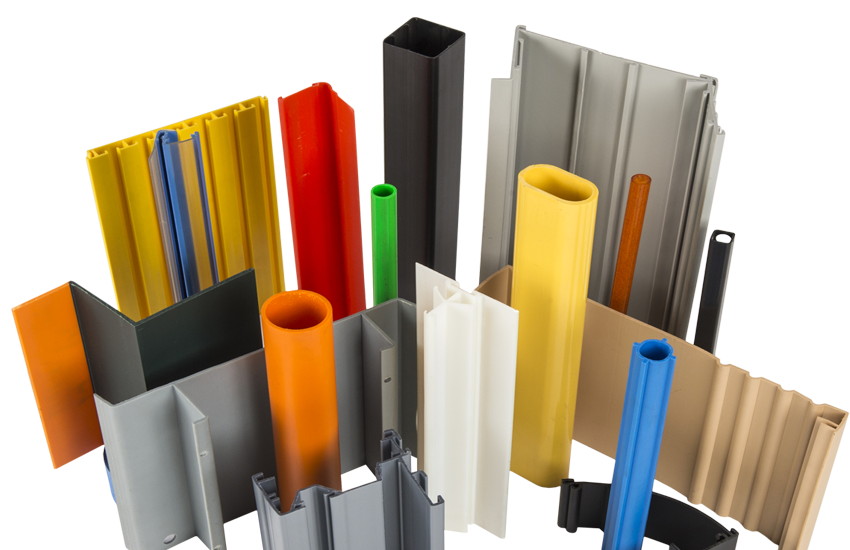Extrusion involves various flow types including laminar, turbulent, plug, elongational, and Newtonian vs. non-Newtonian flows.

Laminar Flow
Laminar flow, often referred to as streamline flow, describes a scenario where fluid particles move in parallel layers, with minimal or no cross-mixing between the layers. Picture layers of fluid gliding over one another like sheets of paper.
Characteristics of Laminar Flow
- Smooth Motion: In laminar flow, fluid flows smoothly and in parallel layers. This is opposite to turbulent flow where chaotic eddies and swirls are prominent.
- Low Velocity: Laminar flow typically occurs at lower velocities. The Reynolds number, a dimensionless number used in fluid mechanics, is usually less than 2000 for laminar flow.
- No Cross-mixing: There’s minimal interaction between the adjacent layers in laminar flow. This results in a very orderly movement of particles in the fluid.
- Predictable Flow Pattern: Due to its orderly nature, laminar flow can be relatively easy to model and predict, especially compared to turbulent flow.
Impact of Laminar Flow in Extrusion
- Uniform Material Distribution: Laminar flow in extrusion ensures a consistent and uniform distribution of material. This is crucial for products that demand homogeneity.
- Reduced Defects: Since the material flows smoothly and without cross-mixing, there’s a lower chance of introducing defects, such as bubbles or unevenness, in the final product.
- Enhanced Surface Finish: Products extruded under laminar flow conditions often exhibit a superior surface finish. This is especially advantageous for applications where aesthetics are crucial.
- Operational Efficiency: Laminar flow can improve the overall efficiency of the extrusion process. It reduces wear and tear on the equipment, as there’s less friction and resistance during the flow.
Turbulent Flow
Turbulent flow is a more chaotic and complex flow regime compared to laminar flow. Fluid particles move in an erratic manner, with swirls, eddies, and unpredictable paths. This type of flow is common in many real-world applications, especially when fluid velocities are high.
Characteristics of Turbulent Flow
- Erratic Movements: Turbulent flow is characterized by its chaotic and irregular motion. Fluid particles don’t move in straight lines but tend to swirl and form eddies.
- High Velocity: Turbulence usually occurs at higher velocities. A Reynolds number greater than 4000 typically indicates turbulent conditions in most flows.
- Increased Mixing: Unlike laminar flow, where there’s minimal cross-mixing, turbulent flow sees significant interaction between adjacent fluid layers, leading to enhanced mixing.
- Difficult to Model: Given its unpredictable nature, turbulent flow is challenging to model precisely. Most modeling approaches, like those in Computational Fluid Dynamics (CFD), involve statistical methods to estimate behavior.
Relevance of Turbulent Flow in Extrusion
- Enhanced Mixing Capabilities: Due to the erratic movement of particles, turbulent flow can help in achieving better mixing of materials, especially when multiple components need blending in the extrusion process.
- Higher Heat Transfer: Turbulent flow can enhance heat transfer rates, which might be beneficial in specific extrusion scenarios where rapid heating or cooling is necessary.
- Potential for Defects: The chaotic nature of turbulent flow can introduce defects or inconsistencies in extruded products if not managed correctly.
- Equipment Wear: The swirling and unpredictable motion of fluids can lead to increased wear and tear on extrusion equipment. Proper equipment design and regular maintenance are crucial to counteract these challenges.
Plug Flow
Plug flow is a flow regime where fluid particles move together in “plugs” or slugs, maintaining their relative positions as they traverse through a conduit. Unlike laminar flow where fluid layers slide past each other, or turbulent flow with its chaotic movement, plug flow involves a solid-like mass of fluid moving uniformly.
Defining Plug Flow
- Uniform Movement: In plug flow, fluid particles move at the same velocity across the cross-section of the conduit. This means all particles, regardless of their position, traverse the conduit length in the same time.
- No Axial Mixing: There’s minimal to no back-and-forth mixing of fluid in the direction of flow. Particles maintain their relative positions, similar to soldiers marching in a column.
- Distinct Fronts: Plug flow often exhibits clear and sharp concentration fronts when different fluid batches are introduced. This is opposite to the dispersion seen in other flow regimes.
- Relevance in Reactors: Plug flow is often a desired flow pattern in certain types of chemical reactors, as it can offer better conversion efficiencies.
How Plug Flow Affects the Extrusion Process
- Uniform Product Properties: With plug flow, extruded products can exhibit consistent properties along their length, given the uniform movement and absence of axial mixing.
- Predictable Residence Time: Since all particles move together, they spend a predictable amount of time in the extruder. This can help in achieving precise reactions or treatments during extrusion.
- Minimized Product Degradation: With a lack of back-and-forth mixing, there’s reduced potential for material degradation due to repeated mechanical or thermal stresses.
- Challenges in Achieving Pure Plug Flow: In reality, achieving perfect plug flow in extrusion can be challenging. However, specific extruder designs and operating conditions can approach near-plug flow behaviors.

Elongational Flow
Elongational flow, also known as extensional flow, is characterized by the stretching or extension of fluid elements. In this flow regime, the primary deformation is the change in length of fluid elements rather than rotation, as seen in shear flow.
Basics of Elongational Flow
- Stretching Motion: At the core of elongational flow is the stretching of fluid particles. Unlike shear flow, where fluid layers slide past one another, here, the fluid elements experience a change in length.
- Rate of Strain: A significant parameter in elongational flow is the rate of strain, which measures how fast the fluid is stretching or contracting. It’s analogous to the shear rate in shear flow.
- Viscosity Behavior: Many fluids, especially polymeric materials, show unique viscosity behaviors under elongational flow. Their resistance to flow can be vastly different from shear conditions.
- Common in Thinning Regions: Elongational flow is often observed in regions where fluid channels constrict or where filaments are drawn, such as in fiber spinning.
Influence of Elongational Flow in Extrusion
- Material Orientation: Elongational flow can induce orientation in polymer chains or other material structures. This orientation can influence the mechanical and optical properties of the extruded product.
- Enhanced Cooling: The stretching in elongational flow can lead to increased surface area for the fluid, promoting faster cooling in extrusion processes.
- Potential for Breaks: If materials are overly stretched or if the elongation rates are too high, it can lead to breaks or defects in the extruded product.
- Melt Strength: In polymer extrusion, the melt strength of the material often dictates how much it can be elongated without breaking. Understanding and controlling elongational flow can be vital in processes like blown film extrusion or fiber spinning.
Newtonian vs. Non-Newtonian Flow in Extrusion
The distinction between Newtonian and Non-Newtonian flow behaviors plays a pivotal role in extrusion processes. These flow behaviors refer to the way fluids respond to applied stresses and can greatly influence the quality and characteristics of extruded products.
Understanding the Difference
- Newtonian Fluids: These are fluids whose viscosity remains constant regardless of the shear rate. In other words, their resistance to flow doesn’t change whether they’re moving slowly or rapidly. A classic example is water. When graphing shear stress against shear rate for Newtonian fluids, one gets a straight line, indicating a constant viscosity.
- Non-Newtonian Fluids: For these fluids, viscosity changes with the shear rate. There are various types of Non-Newtonian behaviors. Some fluids become thinner (less viscous) as shear rates increase, known as shear-thinning or pseudoplastic behavior. Others become thicker (more viscous) with increased shear, known as shear-thickening or dilatant behavior. There are also fluids whose viscosity is independent of shear rate but depends on the duration of applied stress, like thixotropic or rheopectic fluids.

Implications for the Extrusion Process
- Predictability: Newtonian fluids offer more predictable behavior in extrusion processes since their flow characteristics don’t change with varying speeds. This makes equipment calibration and process control more straightforward.
- Material Selection: Many polymers exhibit Non-Newtonian behaviors, especially when they have complex molecular structures. Understanding their flow behavior is crucial when selecting materials for extrusion.
- Quality Control: Non-Newtonian fluids can have varying flow behaviors depending on conditions, leading to potential inconsistencies in extruded products if not managed correctly.
- Equipment Design: Extruders and dies may need to be specially designed or adjusted to handle Non-Newtonian behaviors. For instance, ensuring uniform shear rates across a die can be more challenging with Non-Newtonian materials.
- Energy Consumption: Non-Newtonian materials, especially those that shear-thicken, might require more energy to extrude compared to Newtonian materials. Conversely, shear-thinning materials might ease the extrusion process under certain conditions.
Factors Influencing Flow Types in Extrusion
In extrusion, the type of flow exhibited by the material can influence the quality, consistency, and even the economics of the production process. Understanding these influencing factors ensures better predictability and control over the extrusion process.
Material Properties
- Viscosity: One of the primary determinants of flow type, viscosity is the measure of a fluid’s resistance to shear or flow. Different materials have inherent viscosities, which can be modified by additives or blending.
- Elasticity: Especially important for polymeric materials, elasticity can lead to unique flow behaviors like die swell after extrusion.
- Molecular Structure: Polymers with long chains or branching can entangle, leading to non-Newtonian behaviors. This affects how they flow under different shear conditions.
- Additives and Fillers: The presence of additives, such as plasticizers, or fillers, like fibers or minerals, can modify the flow behavior of the base material.
- Thermal Properties: Materials with high thermal sensitivity can see significant changes in their flow behavior with slight temperature variations.
Die Design
- Geometry: The shape and size of the die can influence flow patterns. Sharp corners or sudden expansions can induce turbulent or elongational flows.
- Land Length: This refers to the length of the final section of the die where the material’s shape is finalized. A longer land can induce more shear, potentially altering flow behavior.
- Surface Finish: A smooth die surface can promote laminar flow, while a rough one might induce turbulence or even lead to material sticking or degradation.
Processing Conditions
- Temperature: The temperature at which extrusion is carried out can influence material viscosity and, consequently, the flow type. For thermally sensitive materials, even slight temperature changes can lead to significant flow behavior alterations.
- Pressure: The pressure applied during extrusion can influence flow behavior, especially in materials that are compressible or those that exhibit pressure-dependent viscosity.
- Feed Rate: The rate at which material is fed into the extruder can influence whether the flow is steady or pulsating.
- Screw Speed: In screw extruders, the rotational speed of the screw can induce shear, potentially leading to shifts from laminar to turbulent flow or even changes in non-Newtonian behavior patterns.

Troubleshooting Flow Issues in Extrusion
Flow issues in extrusion can lead to suboptimal product quality, reduced efficiency, and increased waste. By identifying and addressing these issues promptly, manufacturers can ensure smoother operations and better final products.
Common Symptoms of Flow Issues
- Surging: This refers to inconsistent flow from the die, leading to periodic variations in product dimensions. It can result from inconsistent feed rates or temperature fluctuations in the barrel.
- Melt Fracture: Also known as “sharkskin,” it’s a surface defect where the extruded product has a rough appearance. This typically occurs when the polymer melt’s velocity is too high, causing it to split or fracture.
- Die Swell: After exiting the die, some polymers tend to expand, leading to products with larger dimensions than intended. This is due to the material’s elasticity and memory effects.
- Uneven Flow: This results in varying thickness or dimensions across the width of the extruded product, often caused by non-uniform temperatures or wear in the die.
- Gels or Contaminants: Visible gels, specks, or contaminants in the final product can arise from material degradation, cross-contamination, or issues in material blending.
Remedies and Adjustments
- Optimize Temperature: Ensuring a uniform and optimal temperature profile in the extruder barrel and die can alleviate many flow-related issues. For thermally sensitive materials, even slight temperature tweaks can make a big difference.
- Adjust Screw Speed: Modifying the screw speed can help control the shear rate, which can remedy problems like melt fracture.
- Die Modifications: Redesigning or adjusting the die geometry can address issues like uneven flow or die swell. This might involve changing the die’s land length, smoothing out rough surfaces, or modifying its overall design.
- Material Additives: Using processing aids or lubricants can help reduce issues like melt fracture. However, it’s vital to ensure that any additives used are compatible with the base material and the final product’s intended application.
- Regular Maintenance: Over time, wear and tear on the extruder and die can lead to flow issues. Regularly inspecting and maintaining these components can prevent many problems.
- Quality Control: Implementing rigorous quality control measures, like regular product inspections and monitoring the extrusion process parameters, can help in early identification and rectification of flow issues.




